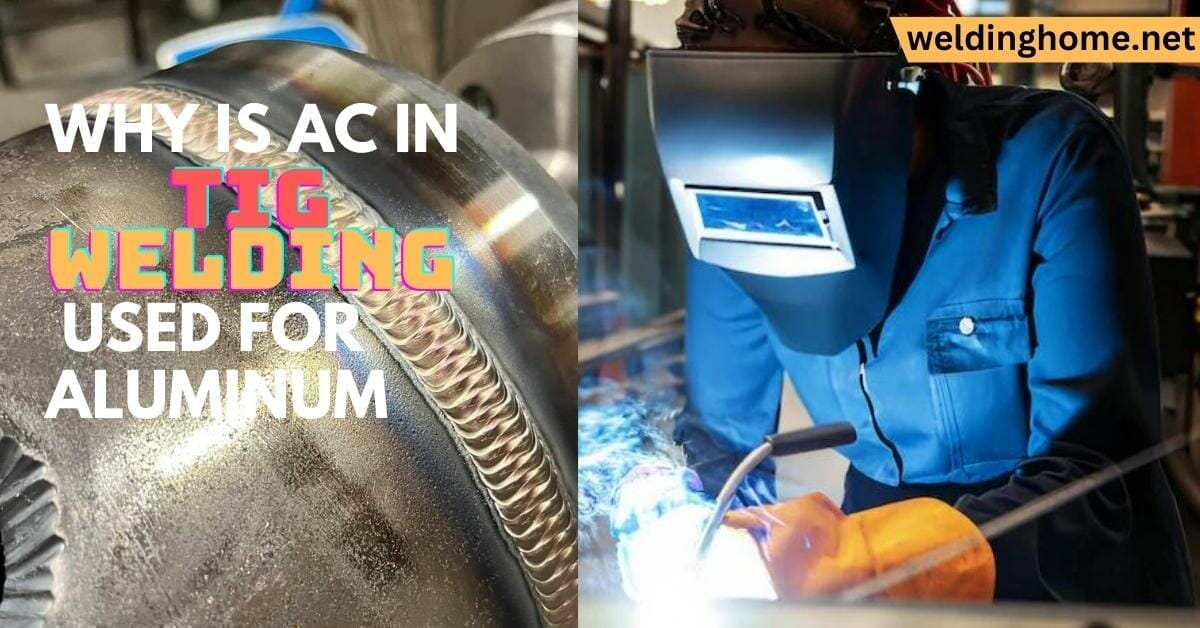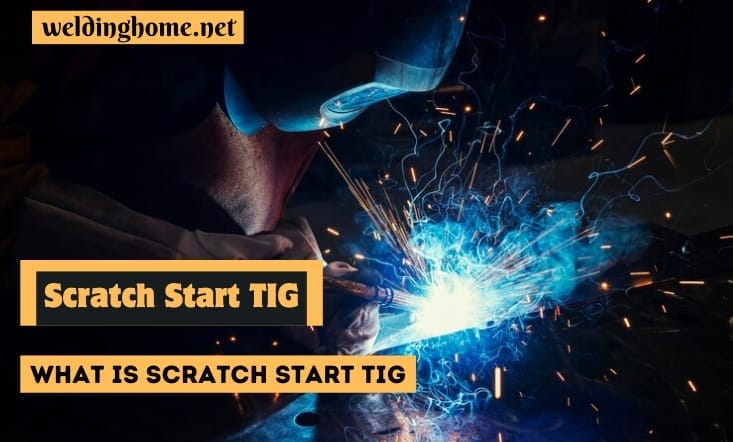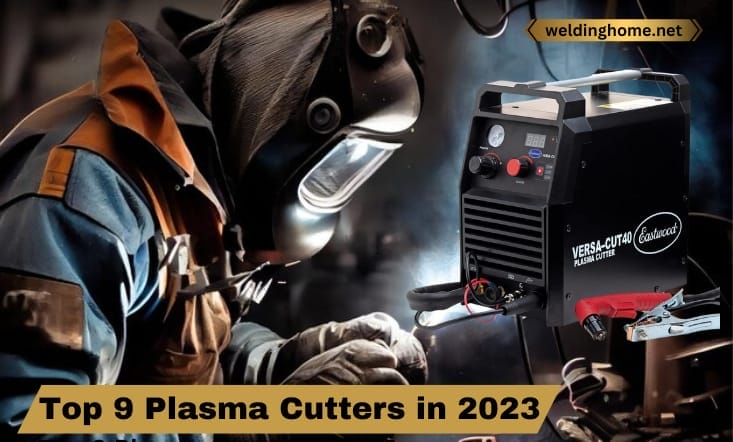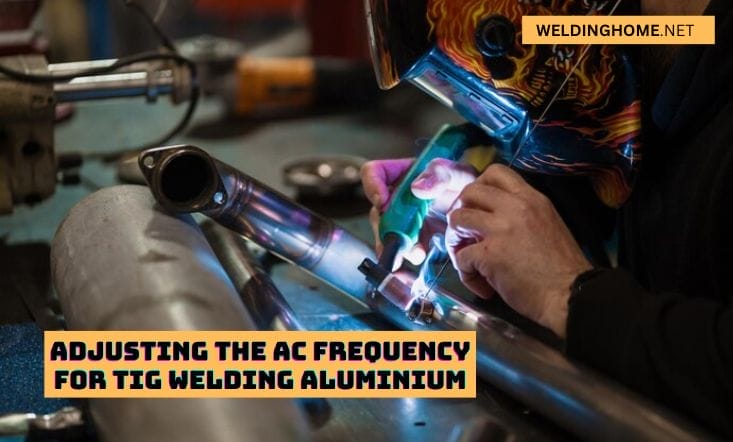Why is AC in TIG Welding Used for Aluminum

Introduction
When I started my journey in welding, I finally got to experience AC/DC; it was also exciting to learn, But what is the purpose of alternating current? What is its relationship to aluminum?
Why is AC in TIG Welding Used for Aluminum Tungsten Inert Gas (TIG) welding, or Gas Tungsten Arc Welding (GTAW), is an adaptable welding process that can be used for various metals, including aluminum.
When welding aluminum, it is recommended that the DC (direct current) polarity be used instead of the AC (alternating current) polarity. AC stands for alternating current. In this introductory guide, I will examine the fundamentals of aluminum welding with AC, highlighting its benefits and providing crucial advice for achieving successful aluminum welds.
Why is AC in TIG Welding Used for Aluminum with Alternating Current (AC)
Alternating current is necessary for tungsten inert gas welding, which is used to join aluminum.
Why is AC in TIG Welding Used for Aluminum because it has positive and negative cycles. The positive process scrubs away the surface oxides that reduce weld quality. This is what all those pictures of flawless welding look like!
The negative cycle is what allows the weld to penetrate deeper. When they’re in sync with one another, they produce professional-grade welds.
Why is AC in TIG Welding Used for Aluminum, Welding aluminum is ordinary in various industries, catering to the demand for sturdy and lightweight metal structures. How to TIG Weld AluminumTungsten Inert Gas (TIG) welding with alternating current AC is one of the most efficient techniques for aluminum Tig welding.
What are some of the benefits of using AC welding for aluminum?

Aluminum possesses distinctive characteristics that present difficulties when applying traditional welding techniques. One of the primary challenges encountered is the swift development of an oxide layer on the surface upon exposure to atmospheric conditions.
The presence of this oxide layer can impede the welding process and potentially lead to welds that are susceptible to weakness and brittleness.
Why is AC in TIG Welding Used for Aluminum, Alternating current (AC) welding offers a viable solution to address this issue. The alternating current (AC) induces a reciprocal motion of electrons, which in turn generates a cleansing effect on the surface of the aluminum. This process effectively disintegrates the oxide layer.
This practice guarantees enhanced fusion between the base metal and filler material, resulting in more substantial and dependable welds.
Read more: Adjusting the AC Frequency for TIG Welding Aluminium
Explain the importance of achieving high-quality welds for various applications.

Improved penetration and weld quality in welding determine welded joints’ strength and reliability.
It plays a vital role in industries such as construction, automotive, aerospace, and oil and gas, where the integrity of welded structures is paramount.
Achieving high-quality welds ensures structural integrity, prolongs the life of components, and reduces the risk of failures, leading to enhanced safety and cost-effectiveness in various applications.
Minimising Tungsten Contamination
In the process of Tungsten Inert Gas (TIG) welding, the electrode made of tungsten is utilized as a non-consumable electrode to generate the welding arc. In the context of DC welding, it is essential to be aware of the potential risk of tungsten contamination.
When TIG welding is set to “electrode positive” (EP), electrons from the tungsten electrode to the workpiece can transfer tungsten particles to the weld pool. This can damage the weld. Aluminum welding requires “electrode negative” (EN) or AC polarity.
Using AC polarity decreases the probability of tungsten contamination, leading to cleaner and more aesthetically pleasing welds. Ensuring high-quality welds in aluminum is of utmost importance.
Conversely, a more significant proportion of favorable cycles yields an enhanced penetration depth, consequently leading to more robust welds.
The frequency control feature of the welding machine allows for the adjustment of the number of alternating current (AC) cycles per second. Increased frequencies result in a more concentrated and stable arc, thereby minimizing the extent of the heat-affected zone and facilitating enhanced precision in the welding processes.
It is common to utilize frequencies within the 100-250 Hz range to achieve optimal results in most aluminum welding applications.
Related post: Can You TIG Weld Aluminum with DC? In-depth Guide 2023
The Common Challenges in AC Aluminum Welding with Alternating Current (AC)

Why is AC in TIG Welding Used for Aluminum, Welding aluminum with Alternating Current (AC) can be tricky because of its unique properties and the welding arc’s behavior. One of the common challenges in AC aluminum welding is
Aluminum oxides quickly in the air. To weld properly, remove this oxide layer. AC welding makes oxide removal harder because the arc alternates between polarities and quickly reform the oxide.
Arc Stability: AC welding causes arc instability, affecting weld quality. Maintaining a stable arc prevents arc wandering, arc length changes, and erratic bead formation.
Heat Control: Aluminum’s thermal conductivity makes welding difficult. Welders must balance applying enough heat to weld and avoiding burn-through or distortion.
Hot Cracking: Rapid weld pool cooling and solidification cause hot cracking in AC aluminum welding. Filler metal selection and welding techniques can reduce hot cracking.
AC TIG welding contaminates the tungsten electrode faster than DC welding. AC welding balls up tungsten and contaminates the weld pool.
AC Balance Settings: AC welding requires careful AC balance settings to control polarity time. High-quality welds require balancing penetration and oxide removal.
Oil, grease, and water affect aluminum’s surface. Cleaning and preparing the aluminum surface prevents weld defects and ensures good fusion.
Gas trapping in the weld pool causes AC aluminum Tig welding porosity.
Gas shielding and proper welding reduce porosity.
Why is AC in TIG Welding Used for Aluminum, These challenges require skill, experience, and knowledge of AC aluminum welding. To make strong aluminum welds, welders must know proper techniques, equipment settings, and material preparation.
Why is TIG (GTAW) preferred for welding aluminum
Why is AC in TIG Welding Used for Aluminum, TIG (Gas Tungsten Arc Welding or GTAW) is best for welding aluminum because it matches its properties. TIG welding provides excellent heat control, which is necessary for aluminum’s low melting point. This precision prevents bending and distortion and ensures fusion. Second, a non-consumable tungsten electrode produces clean, splatter-free welds.
Aluminum’s look and structural integrity depend on this. Thirdly, TIG welding’s filler material versatility makes it suitable for aluminum alloys. Finally, TIG’s adaptability for thin materials and delicate joints makes it the best aluminum welding option for aesthetic and functional reasons.
Why is AC Required for TIG Welding Aluminium?
Alternating current, often known as AC, is used in the TIG (gas tungsten arc welding) process of welding aluminum. This process requires the electrode to rapidly transition between positive and negative cycles.
The oxide layer on the surface of the aluminum can be broken down with the assistance of AC, which allows for more efficient fusion.
Oxidation and corrosion

Oxidation and corrosion degrade metals and materials. They refer to different chemical reactions and mechanisms but are often used interchangeably.
Oxidation: A substance reacts with oxygen or other oxidizing agents in oxidation. The importance loses electrons, increasing its oxidation state. Oxidation can form a thin oxide layer on metals, protecting them from corrosion. Iron reacts with oxygen and moisture to form rust, covering the metal underneath.
Corrosion: Chemical reactions with the environment cause metals and materials to deteriorate.
Decay can involve oxidation and other processes, such as salts or complex compounds forming. Corrosion, unlike oxidation, weakens and destroys metals.
Corrosion types include uniform corrosion, pitting corrosion, galvanic corrosion, crevice corrosion, and stress corrosion cracking. Each type affects metals under different conditions.
Prevention and Control: Corrosion-resistant materials, protective coatings (paints, plating), and proper maintenance can prevent oxidation and corrosion.
Heat-Affected Zone (HAZ)
Welding and metal joining depend on the HAZ. Welding melts base metals into a pool. The base metal experiences significant temperature changes without melting in the HAZ around this pool.
Grain growth, phase transformations, and residual stresses occur as metal rapidly cools in the HAZ. These changes can weaken and crack the HAZ. Welding techniques and heat input control are crucial to minimizing heat-affected zone effects and ensuring joint integrity.
Metal Selection for Filler
Welding and metal joining depend on filler metal selection. Welding filler metals are chosen based on several factors:
Base Metal Compatibility: Filler metal should be compatible with the welded base metal. Compatibility ensures a robust and durable weld by matching the base metal’s mechanical properties.
Filler metals vary by the welding process. Tig Tungsten Inert Gas welding uses filler rods made of base metal, while Metal Inert Gas (MIG) welding uses various filler wires, depending on the application.
Joint Design and Application: Filler metal selection depends on joint design and use. Joint thickness, geometry, and use determine the filler metal.
Mechanical Properties: Filler metal selection depends on weld mechanical properties like tensile strength, flexibility, and impact resistance. Some filler metals improve strength, toughness, or flexibility.
Corrosion Resistance: Choose a filler metal with good corrosion resistance for long-term performance in corrosive environments.
Cost and Availability: Cost and filler metal availability are essential in large-scale industrial applications.
Welders and engineers can choose the best filler metal for their welding application by considering these factors, ensuring solid and reliable welds with the desired properties.
Can All and Any TIG Welders Weld Aluminum?
Welding aluminum requires the capacity to regulate alternating polarity, which can only be achieved with certain types of TIG welders.
Welders specifically developed for aluminum work have features that allow for effective AC welding, which guarantees the successful production of aluminum joints.
Conclusion
Welding and metal joining require a suitable filler metal. A good filler metal produces a robust and reliable weld with mechanical properties similar to the base metal. When choosing, consider base metal compatibility, welding process, joint design, application, mechanical properties, corrosion resistance, cost, and availability.
Welders can produce high-quality, reliable welds that meet mechanical and performance criteria by understanding the importance of filler metal selection. A well-informed filler metal selection ensures welding project success and improves the safety, durability, and longevity of welded components and structures.
FAQ’S
Why is AC in TIG Welding Used for Aluminum
AC Welding
Welding aluminum is ideal for alternating current (AC) TIG welding since the alternating current has positive and negative cycles. The positive cycle has a scrubbing effect on the metal surface by removing oxides that adversely impact weld quality. In contrast, the negative cycle allows deeper weld penetration.
Do you use AC for TIG weld aluminum?
DC is used for TIG welding Mild Steel/Stainless material, and AC would be used for welding Aluminium.
Can you weld aluminum without AC?
MIG and TIG are very different processes, but both can weld Aluminum TIG Welding. While MIG can handle aluminum using a DC, the TIG process requires AC.






